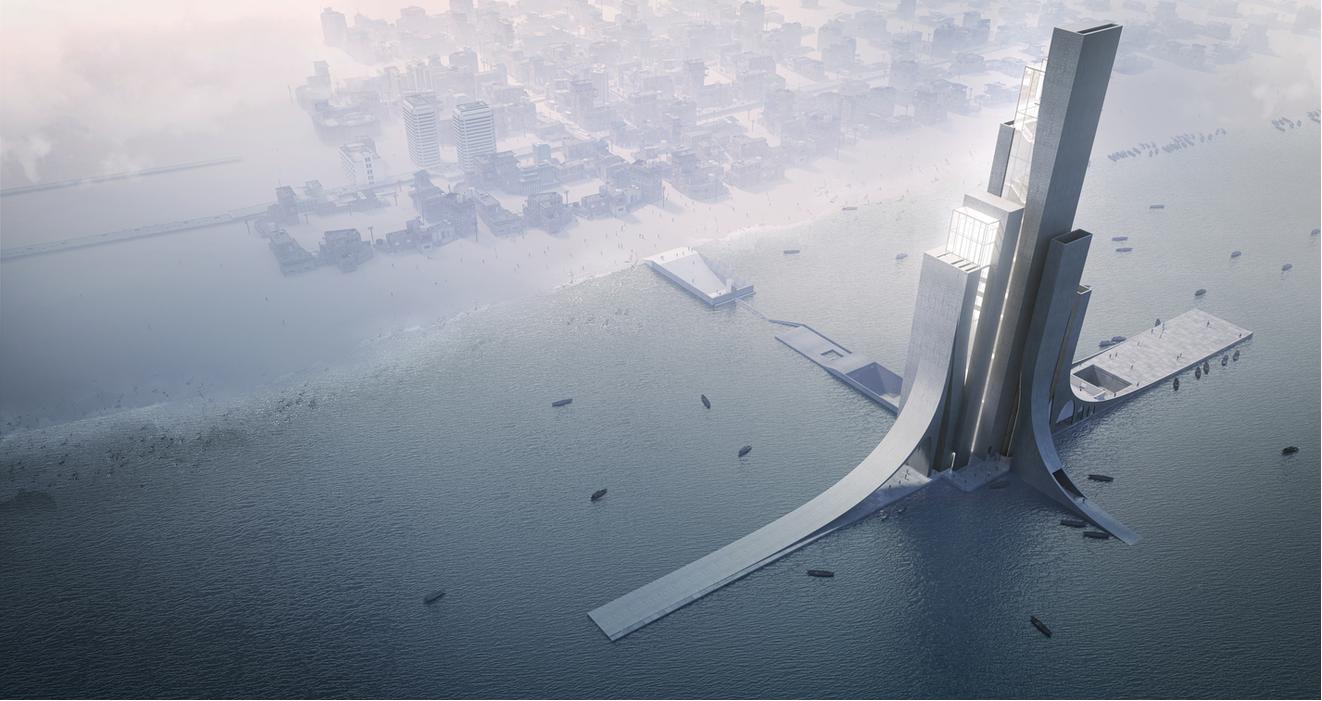Coastal Monument Valley: Lighthouse of St. Louis Island, Senegal

Category
Daylight in buildings - Region 4: Asia and Oceania
Students
Bojia Xiao
Xiaolan Xie
Qitao Mai
Xinglin Zhang
Yang Ding
School
Guangzhou Academy of Fine Arts
Country
China
Download
Download ↓
The project is located on the island of Saint Louis in northwest Senegal. The historic city of Saint Louis is an essential hub for exchanges and mutual influence in education and cultural development in West Africa. It is a city worth understanding in terms of both geographical location and historical value.
Senegal’s source was most dependent on tourism. As a world heritage site, the country attracts many tourists. St. Louis Island is also a journey traveler’s dream destination. The island’s formal city planning, numerous quay pier, and colonial buildings of different styles make St. Louis a distinctive and unique destination. Yet Senegal’s GDP and per capita income are among the lowest globally, making it one of the least developed countries in the world. In addition to tourism, Senegal also has a long history of fishing. Fishing is another pillar of Senegal’s economy and the country’s number one foreign exchange earner. Situated near the mouth of the Senegal River, St. Louis has been home to generations of fishermen who were lost or killed in sea disasters and by poor infrastructure.
In this context, we hope to build a lighthouse as a functional landmark to enhance the tourism industry and solve local economic difficulties. This “monument lighthouse” would break through the navigational functions of the lighthouse and create new programs, including exhibitions and Islamic ceremonies. The lighthouse is a landmark to guide ships and urban culture, and internally, it is a place of experience and commemoration for residents and tourists. A new form of the lighthouse can be created at the coast, driving the development of the city’s economy and spiritual civilization.
A lighthouse is made up of lamps and towers. Building materials with high stability and durability are selected to resist harsh natural conditions. Lamps are composed of two essential parts: luminescent and radiant devices. With light as the main element, the lighthouse extracts the historical process of St. Louis and uses narrative techniques to create a memorable exhibition space. The project is introduced by a long corridor, and the spacious and bright open-air entrance atrium is flooded with sunlight, which is the representation of the spatial intention of a sense of security and the transmission of the first emotion — “stability.” At the end of the atrium is a dark narrow entryway that leads streamlines to the seafloor; Light pours in from a crack in the side, hitting the rough and convex rock wall of the interior, conveying the psychological mood of “helplessness”, which is the epitome of the local colonial history. At the end of the dark passage, the light spot is the lighthouse atrium, which is like dawn pulling the oppressed creatures into the darkness. The light illuminates the atrium through the refraction of the seawater, which is the expression of “harmony” and symbolizes the rebirth of the local people after the baptism of war. The negative ground floor of the project is the transportation hub of the whole lighthouse. The main tower and the three secondary towers communicate and connect through the negative ground floor. This sunken space is like the heart of the building, where the footprints come and go, conveying the “sad” emotional feelings of invasion in this space. The main tower is the climax of the inner space. A beam of light pours down the wall from the top, like a holy light that heals the souls that have passed through the battlefield, symbolizing the bright future of the entire Island of St. Louis. A single route presents five emotions, namely, stability, helplessness, peace, sadness, and excitement, as if walking through time and space. The memory of history is reproduced one frame by frame in the building.
The main tower is surrounded by three secondary towers, which symbolize the three elements of the city – people, ethnic, and religion: 1) In the development process of St. Louis Island, revolutionaries are the heroes who saved the city, and every individual was the driving force supporting the survival and development of the city. Therefore, the secondary tower symbolizing the people is attached to the main tower in the highest posture. 2) The superior geographical location makes the city a place for wars, and the concept of ethnic provided the people a sense of belonging in their hearts during the war, which is the lighthouse of St. Louis in the dark period. 3) Islam is the belief of the city, such as the dawn light guiding the city to overcome the wind and rain. The spirit of Islam is translated into the Mosque space in the project. All three factors surround the city and form a wall that protects St. Louis day after day. The base of the three sub-towers extends out of the main tower to the sea, providing a port for fishermen to dock their boats.

































